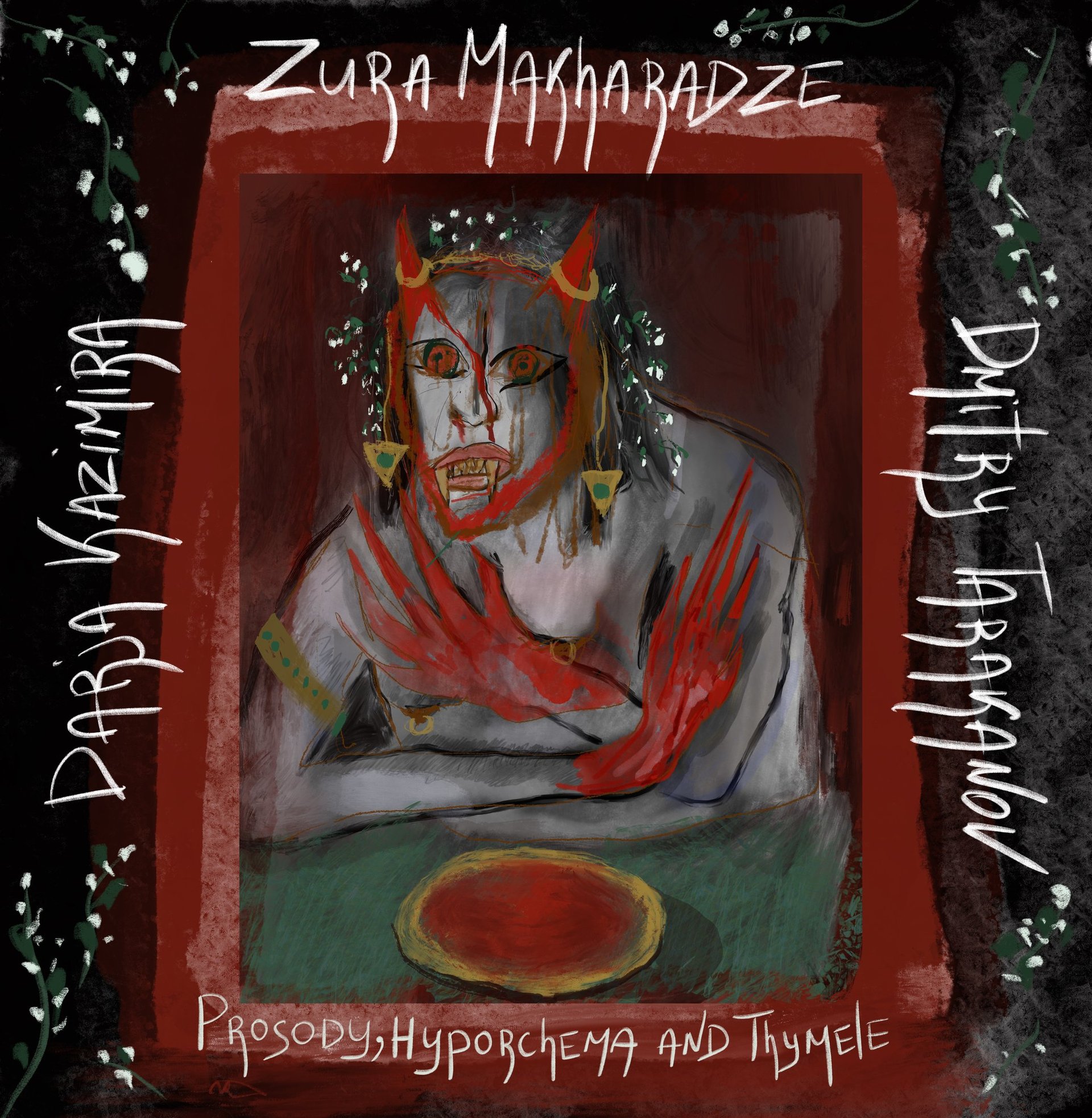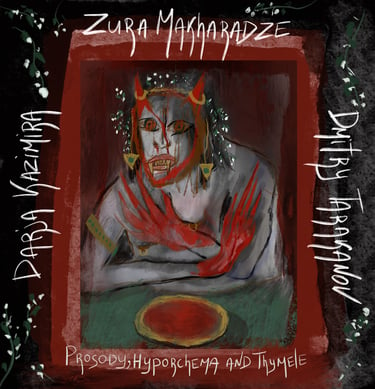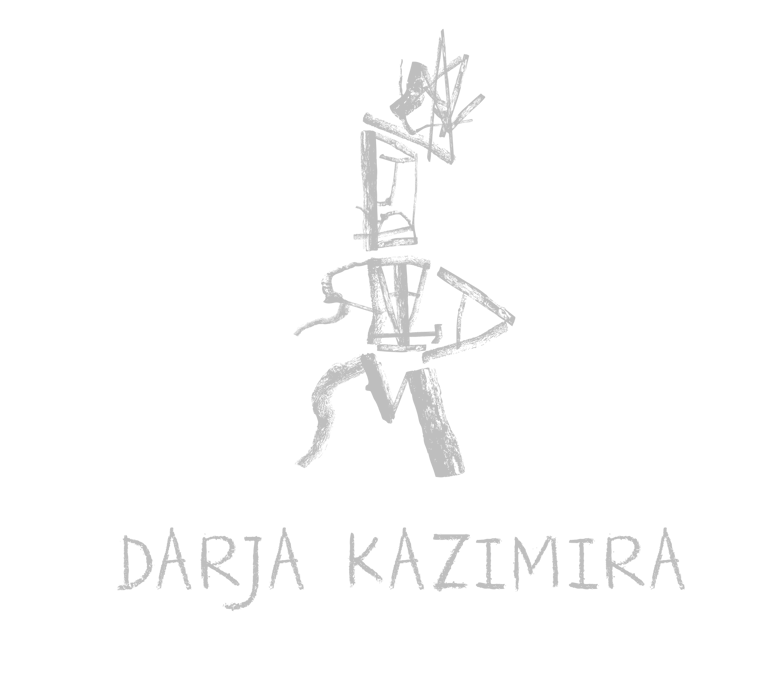
Prosody, Hyporchema and Thymele
by Darja Kazimira, Zura Makharadze and Dmitry Tarakanov
This composition is inspired by generalized archaeological information about the musical construction of ceremonial sacrifices (including human sacrifice) in ancient Greece, which implied V conditional steps, components of a large structure that included hymns, lamentations, dances, and altar songs. Despite the fact that the composition has the name "Prosody, Hyporchema and Thymele", it reflects each of the segments of the described system.
I. Prosody - massive city procession, the purpose of which was the festive accompaniment of the victim to the altar, as well as notification of the coming ritual time. Traditionally, bugles, aulos, horns, metal percussion instruments and barbetons (in Anatolia and the eastern regions of the Aegean Sea) were used for this procession. Proclus (400/412—485) in his "Chrestomathy" points to the dominant role of aulos in this act. But most likely, the choice of an accompanying instrument depended on who the sacrifice was intended for. If the sacrifice was offered to Apollo, Artemis, or Athena, then primarily stringed instruments sounded, if to Dionysus — then aulos and horns. Both stringed and wind instruments could participate in sacrifices to other gods (Zeus, Ares, etc.). A jubilant crowd of citizens during the time of Prosody performed the cycled rhythmic actions, essentially playing the role of a living rhythmic system.
II. Hyporchema. This musical form is universal for several types of cults at once, and it is well known to us thanks to the cults of Dionysus and Apollo. This is a joyful song, full of jubilation, accompanied as a rule by instruments used specifically in the entertainment context, namely various strings and flutes. The vocal accompaniment in Hyporchema dividings into two functional parts: the choir became dancers, while the soloist of the choir (coryphaeus) performed the main sacred songs.
III. Éffime. The herald announces the need for silence before the sacrifice.
IV. Oligamos. Mass silence was followed by the Oligamos, which is a choral song-lamentation performed only by women. Such a hymn-cry is mentioned in the "Petitioners" of Aeschylus.
V. Thymele. The musicians who completed the ceremony were called thymelike - these are musicians whose functions and repertoire included only songs performed at the altars. Thymele itself basically means the altar of Dionysus. As is known from later documents, such as three letters from the Roman Emperor Hadrian found in Alexandria Troas, the term thymelike later came to mean "artists of Dionysus", as well as a vulgar, theatrical style.
The whole ceremony was performed mainly in the Dorian dialect, despite the fact that the documents attesting to these processions date back to the V century BC, when the Attic dialect became the main one, as the evolution of proto-Greek languages, which indicates that this system of ritual originated in ancient times, with the Dorian invasion in the II millennium BC.E.
Released August 30, 2022
Artwork - Darja Kazimira
This musical act was created for a performance "Πνοή" (The Breath) by the Greek artist Grigoris Myrgt.
Darja-Kazimira Zimina (Darja Kazimira) - vocals, wood and metal percussion, duduki
Zura Makharadze (known by "Darja Kazimira" project) - drums, metal percussion, vocals
Dmitry Tarakanov (known by Alexei Tegin's project "Phurpa") - throat singing, vocals, dungchen, horse skull igil


